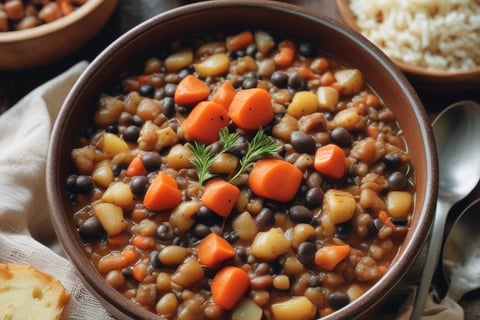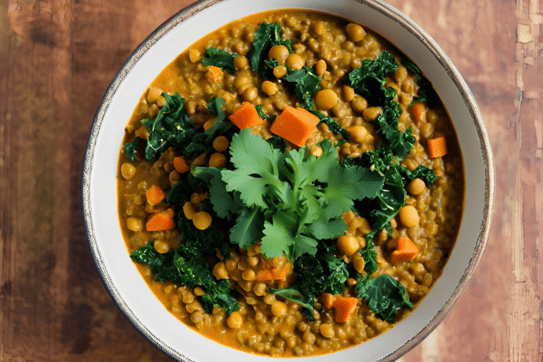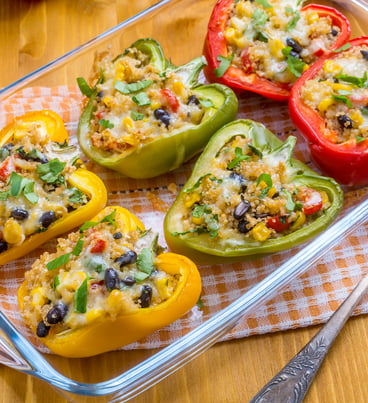The Power of Lentils
Lentils are often hailed as a nutritional powerhouse, providing an impressive array of health benefits. Rich in protein, fiber, vitamins, and minerals, lentils serve as a versatile food option for those seeking to enhance their nutritional intake.
LENTILS
2/4/20255 min read


Introduction to Lentils
Lentils are small, lens-shaped legumes that play a significant role in global nutrition and culinary traditions. Known scientifically as Lens culinaris, they are among the oldest cultivated crops, with evidence of their consumption dating back over 9,000 years. Originating from the Near East, lentils have historically been a vital source of protein, particularly in regions where meat might be scarce. They are notable for their adaptability, offering a rich source of nutrition while being easy to grow in diverse climates. The variety of lentils available—including red, green, brown, and black—further enhances their culinary potential, each type offering distinct flavors, textures, and cooking times.
Lentils are not just culturally significant; they are also acknowledged for their remarkable nutritional profile. Rich in protein, fiber, vitamins, and minerals, they serve as an excellent plant-based source of nutrition. This makes lentils particularly appealing for those adhering to vegetarian or vegan diets. Their ability to absorb flavors allows them to adapt easily to various ingredients and cooking methods, making them a beloved staple in households around the globe.
With their low environmental impact compared to animal-based protein sources, lentils are increasingly appreciated for their sustainability. Their cultivation improves soil fertility, making them a responsible choice for environmentally conscious consumers. As we delve deeper, we will explore the myriad health benefits and practical meal-prep ideas that highlight the power of lentils in modern diets.
Health Benefits of Lentils
Lentils are often hailed as a nutritional powerhouse, providing an impressive array of health benefits. Rich in protein, fiber, vitamins, and minerals, lentils serve as a versatile food option for those seeking to enhance their nutritional intake. One of the most notable advantages of consuming lentils is their high protein content. They contain approximately 18 grams of protein per cooked cup, making them an excellent choice for vegetarians and vegans looking to meet their protein requirements.
In addition to protein, lentils are also an exceptional source of dietary fiber, which plays a crucial role in promoting digestive health. A single serving of lentils contributes around 15 grams of fiber, supporting regular bowel movements and preventing constipation. Furthermore, high fiber diets are associated with reduced risks of colon cancer and other gastrointestinal disorders. By including lentils in your diet, you can enjoy the benefits of improved digestive function.
Heart health is another area significantly impacted by the consumption of lentils. These legumes are low in saturated fat and cholesterol-free, making them a heart-friendly food option. Their high levels of magnesium and potassium contribute to better blood circulation, blood pressure regulation, and overall cardiovascular health. Lentils are also rich in folate, which is essential for reducing homocysteine levels—a risk factor for heart disease.
Weight management is also improved through the inclusion of lentils in meals. Their protein and fiber content contribute to increased feelings of fullness, reducing overall calorie intake without sacrificing nutrient density. For those adopting plant-based diets, lentils offer a great way to enhance nutritional balance while potentially reducing the risk of chronic diseases such as diabetes and hypertension. Their antioxidant properties also contribute to cellular protection against oxidative stress.
Easy Ways to Use Lentils in Cooking
Lentils offer a remarkable versatility that makes them an ideal ingredient for a wide array of meals. To incorporate lentils effectively into your cooking routine, it is essential to understand their preparation methods and various culinary uses. Each type of lentil—green, brown, red, or black—carries its own unique texture and flavor, suited for different dishes.
One of the simplest ways to prepare lentils is by boiling them. Start by rinsing the lentils thoroughly to remove any debris, then add them to a pot with water in a 1:3 ratio. Bring the water to a boil and then let it simmer until they reach your desired tenderness. Typically, green and brown lentils take about 20-30 minutes, while red lentils cook faster, roughly 15-20 minutes, making them perfect for quick meals.
Lentils can be incorporated into various types of dishes. For a hearty meal, consider adding them to soups and stews for extra protein and fiber. A simple lentil soup can be made by sautéing onions, garlic, and carrots in olive oil; then, add cooked lentils, vegetable broth, and your choice of herbs and spices. For those seeking fresh options, lentils can also enhance salads. Cooked and cooled lentils mixed with diced vegetables and a light vinaigrette create a satisfying and nutritious salad.
Lentils can be used to prepare lentil burgers or fritters. Combining cooked lentils with breadcrumbs, spices, and finely chopped vegetables yields a delicious patty that can be grilled or baked. They can also serve as a filling for wraps, and mix well with various toppings. Given their adaptability and ease of preparation, lentils can not only enrich your meals but also contribute to a balanced plant-based diet.
Ready to try them out? Check out our easy Creamy Coconut Lentil Curry recipe here!
Meal Prep with Lentils: Time-Saving Strategies
Incorporating lentils into your meal prep routine can significantly streamline your cooking process and promote healthier eating habits. One effective strategy is batch cooking, which involves preparing large quantities of lentils at once. Start by rinsing and soaking your lentils according to package instructions, then cook them in bulk. This way, you can have ready-to-use lentils for various meals throughout the week. By batch cooking, you save valuable time on daily meal preparations and ensure that nutritious options, such as lentil salads, soups, and stews, are always on hand.
Storage is another critical factor in meal prepping. Once your lentils are cooked, allow them to cool completely before transferring them to airtight containers. Store them in the refrigerator for up to a week or freeze individual portions for up to three months. Labeling the containers with dates will help you keep track of freshness. Utilizing freezer-safe bags can also save space and make it easier to defrost only what you need for a meal.
Combining lentils with other ingredients is crucial for creating balanced meals. Consider pairing cooked lentils with grains like quinoa or brown rice, which will provide a complete protein profile. Additionally, incorporating vegetables such as spinach, bell peppers, or carrots not only enhances the nutritional value but adds flavor and texture. Experimenting with various herbs and spices can transform basic lentil dishes into exciting culinary experiences, ensuring that meal prep remains enjoyable rather than tedious.
By implementing these time-saving strategies, lentils can become a staple in your meal planning. Their versatility and nutritional benefits make them ideal for busy lifestyles, allowing you to enjoy wholesome meals while maintaining a good health regimen. With thoughtful preparation and storage practices, lentils can contribute significantly to a healthier diet.


Easy Healthy Recipes for Busy Cooks
Connect
© 2025 All rights reserved.






